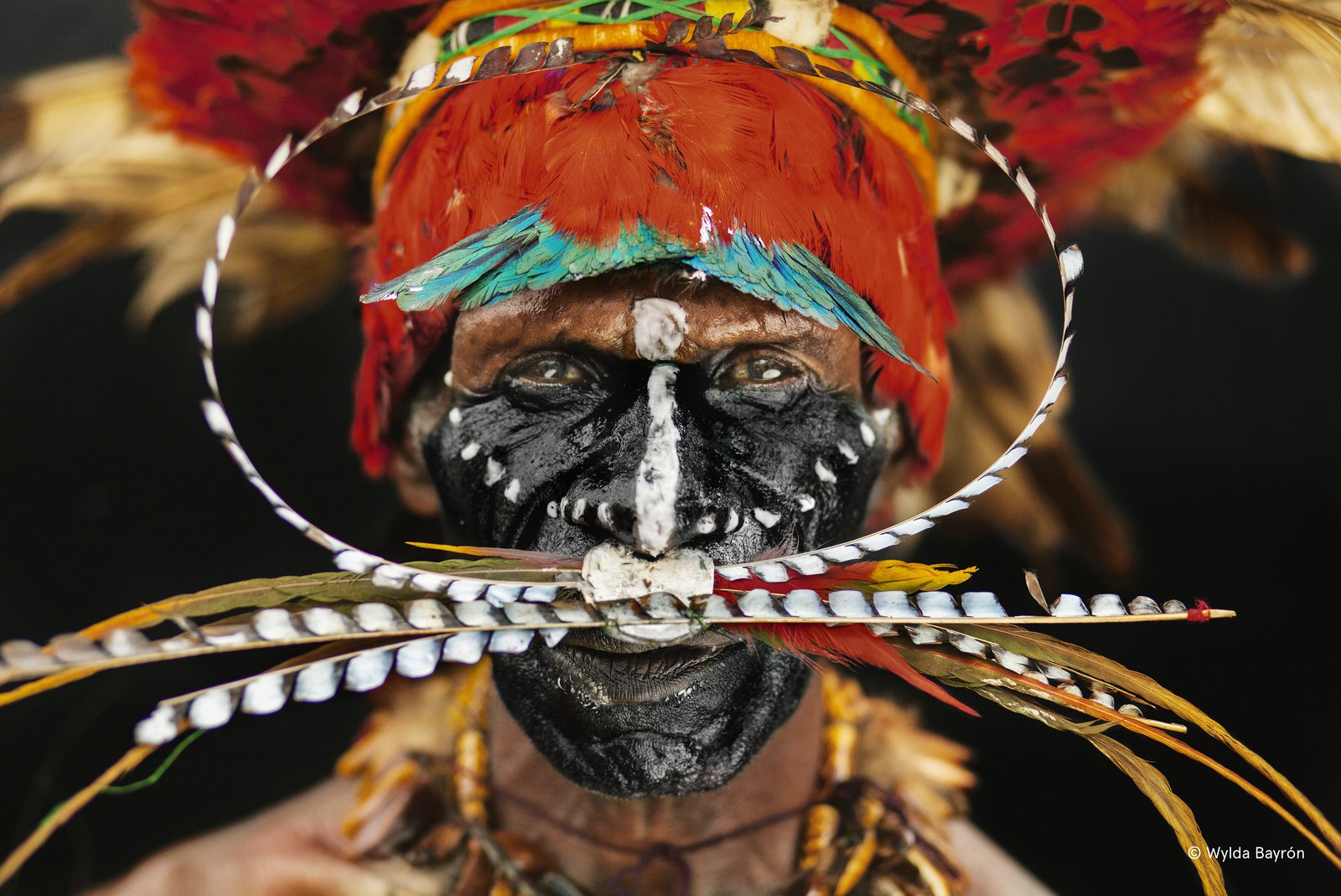From the Director: Let’s celebrate beautiful Bilas body adornment
Sometimes a culture’s dominant expression of its history is shared as powerfully in images as it is in words.

© Wylda Bayrón
Woven straight from the spirit of a community’s lore and showcased by way of physical adornment, you see the sensory might of newly commissioned Bilas – 33 new pieces for the AM – on display in our exhibition Bilas: Body Adornment from Papua New Guinea. It is the first time these adornments have been commissioned for an Australian institution.
This is the most stunning body adornment language, expressed in colour, texture and shape.
Back in 2016, at one of our Live Talks at the AM, Jim Gahiye, a performer and one of the Holosa region’s mud mask makers, was here as part of our community engagement outreach. I’ll never forget his gentle, low-key explanation to the audience that kids from the Holosa area actually start learning to roll clay for these incredible “mud men” masks at just four years of age through to adulthood. A nature-based sensory and ultimately creative way into learning their own diverse cultural story into adulthood where more than 850 languages are spoken across PNG.
So, this joyful post is simply celebrating the living art form through self-decoration.
Up close, the physicality of the Bilas brings immediacy to the storytelling, in a put-down-the-phones-and-stare-in-awe way. And the new pieces are accompanied by photographer Wylda Bayron’s renowned and arresting images.
The AM has around 60,000 Pasifika objects in the Pasifika collection, which we’re pleased to be showing more of permanently when the new Pasifika Gallery opens in October. Our goal is to encourage deeper bonds with Pasifika’s many communities while remembering that the Pacific is literally on our doorstep.
I’m keen to soon be able to welcome Highlanders from three PNG cultural groups: Koki, in the Laiagam District Enga Province; Yalu, Kagua District in the Southern Highlands Province; and Meingik, in Koinambe, Jimi District in the Jiwaka Province, to tell us more of what they’re seeing in their home communities right now, their existential environmental challenges and, of course, about the new cultural adornments they’ve created for the AM collection for the Bilas exhibition.
While Bilas is breathtaking, you may have also seen the media coverage of the incredible Ngatu Me’a’ofa, Tongan Tapa bark ‘rug without a floor’, stored at the AM’s offsite collection facility, and whose unfurling in full last month for the first time in 50 years needed two cranes under the watchful eye of Her Royal Highness Princess Angelika Lātūfuipeka Halaevalu Mata’aho Napua Okalani Tuku’aho, Princess of Tonga, female leaders of the Tongan community and Melissa Malu, our Manager of the Pasifika Collections and Engagement. Measuring 29m x 15m and one of the largest in the world, this Tapa bark cloth is well worth a look.

© Australian Museum




